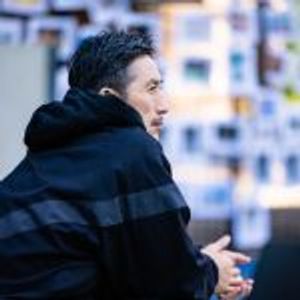For 25 years now, I’ve been publishing pages with photographers of skateboarding, whom I call “skate-photographers.” In fact, they are not only skateboard photographers, they are photographers in general who, like other photographers, make a living by taking pictures of various things and delivering or exhibiting and selling them. There are other photographers who only want to shoot skateboards even though they can shoot other things. For me, as someone who has been making skateboard magazines for a long time, they are as fascinating and interesting as skaters, sometimes even more so than skaters. This column is devoted to them.

The story surrounding skateboarding in Tokyo in the 1990s and early 2000s
f I am allowed to indulge TOKION’s generous understanding, I would like to write a serial column in terms of the theme of “A skate-photographer’s point of view and the skate scene in Tokyo”. This time, it will be something like an intro. That’s what I think on my own. If my writing abilities and my perspective are not good enough, we can do it in relay. Or we could do it in turn with people whose eyes and minds we can trust. However, I would like to apologize in advance, as there is a good chance that readers will not see the rest of this column in the future.
I have been in the middle of the Tokyo skateboarding scene for more than 20 years and have left many pages behind, so I may be able to write about what I know a little. However, I am not the right person to talk about it as if I were a living dictionary. There are many more people who could and should talk about it. Furthermore, we cannot forget the existence and achievements of the late Devil Nishioka, Japan’s first skate journalist, artist, and skater, and Dog-Towner Hiroshi Otaki, who created the “T19” and many other skate scenes in Tokyo.
However, there are so many things I would like to write or could write about the perspective of Tokyo skate-photographers, or rather, about skate-photographers themselves in Tokyo, from my own point of view. That’s because it is such an important part of my work, and of creating a skateboarding magazine here in Tokyo for many years. And I think that I am the one who has properly treated the important part as an important part and has been actively involved in it.
The number of skaters was not increasing. The situation was not like in the U.S.. In Tokyo in the 1990s, a lot of people were complaining about the situation at the time. I had a hunch that more than the lack of skaters, there was an overwhelming lack of people photographing, documenting, and preserving the amazing tricks and traces of these rare and cool skaters. That was back when one skateboarding magazine was finally published. I became the editor-in-chief of that magazine quite by accident. As I mentioned earlier, I began to discover and promote skate-photographers, people who photograph and document skaters. Before that, people who took pictures of skaters in Tokyo also took pictures of BMX, surfing, and snowboarding. Or rather, the people who were taking pictures of surfing also had a deep knowledge of skateboarding, and they put a lot of effort into taking pictures of skateboarding as well.
However, the 1990s was the time where skaters went out into the city and expressed themselves by seeking out street spots while cruising around. Shooting from the front of a section of the park or from the top of a ramp platform would no longer be the main focus of the photographers. This requires a slightly different technique or perspective than shooting on the beach or in the backcountry. In the U.S., ACITON NOW, a magazine that dealt with BMX and surfing along with skateboarding, gave place to THRASHER, a skateboarding magazine dedicated solely to skateboarding. In response, “WHEEL,” the only skateboarding magazine in Japan at the time, was launched in Tokyo. This was when things started to get interesting. Instead of photographers who could shoot skateboarding, BMX, and surfing, photographers who could only shoot skateboarding, or skaters who only wanted to shoot skateboarding, began to emerge.
I actively hooked up with such enthusiastic skateboard fundamentalists or skateboard-loving photographers and people (who had only just barely bought a camera and were motivated only by the desire to skate), worrying little about some errors and mistakes they made. It may sound a bit arrogant to write so, but in reality, I myself absorbed and learned various things simultaneously with these people, sometimes breaking down stereotypes, and at other times re-creating concepts. I have been given a lot of stimulation and possibilities. In fact, many of the photographers and writers who have the word “skate” in their job titles today seem to have debuted in WHEEL magazine or in the early days of Sb Skateboard Journal (But many people may want to erase the work experience they gained from the magazine from their profiles as his/her black history (laughs). Some may want to think that they are who they are today because of no one else, which I think is also fine).
Anyway, the most obvious change was that in pursuing the coolness of skateboarding and especially of street skating in such a way, we needed cooler and more ingenious way of shooting. One of the most obvious ones was the drastic decrease in the number of people taking portraits, skate photos, and off-shoots with the same lens. Depending on the place and time of day, the subject skater began to change T-shirts and shoe laces (It means that we began to prepare the same items of different colors). We started to order wireless flash trigger from the U.S. and set up several strobes for synchro-flash photo shooting, even in the daytime. If skaters and photographers could make cool skate photos, they were published as big gravure pictures in professional magazines.
They no longer had to accept the fact that their photos were being cropped, collaged or reduced to a small size in fashion magazines. (However, it is also true that some photographers in particular still consider it more valuable to show their work in a fashion magazine with a large circulation than to show it as a gravure picture in a “minor” specialty magazine, as a remnant of the previous era.) This is the story of Tokyo from the 1990s to the early 2000s, though it is rather sketchy.
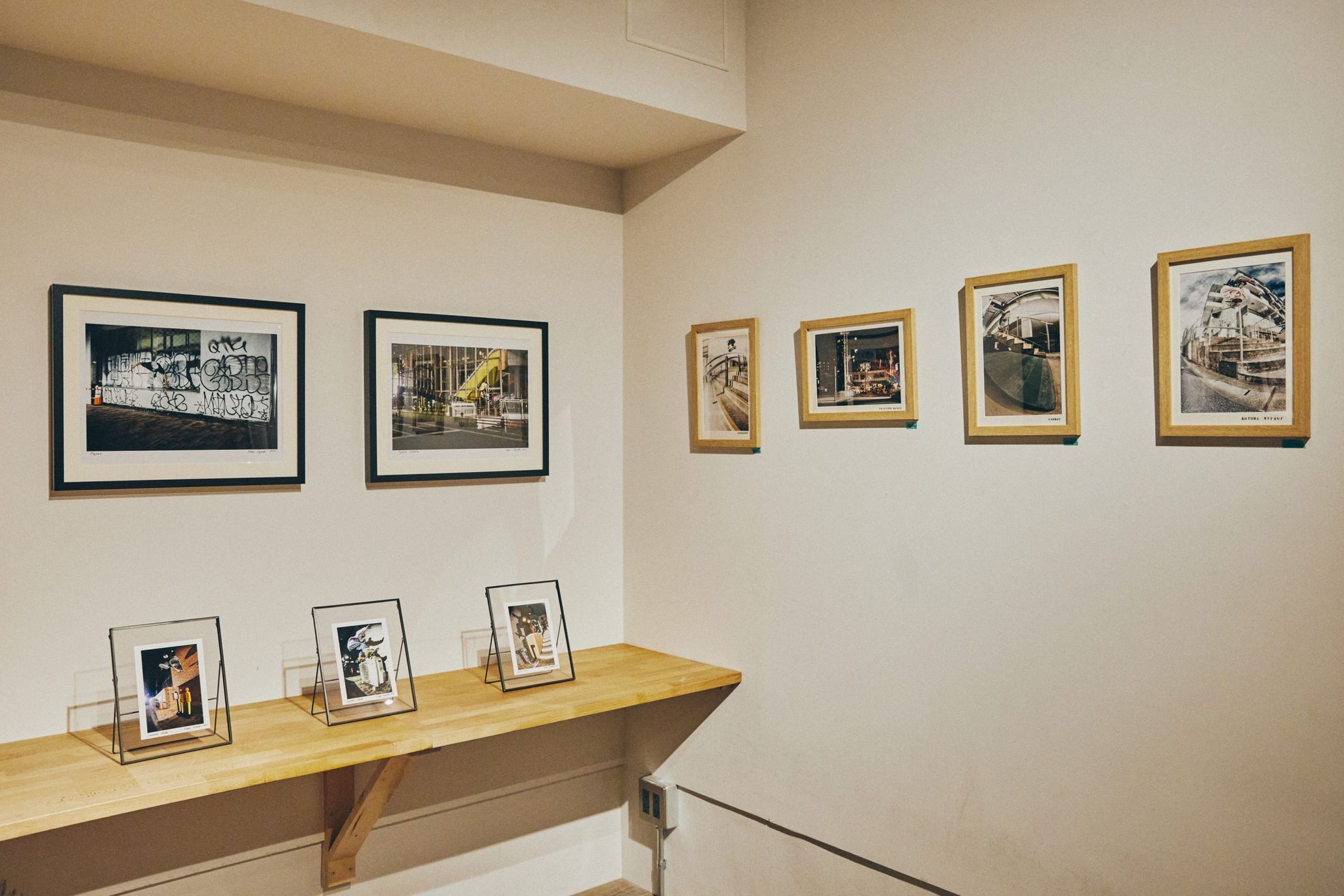
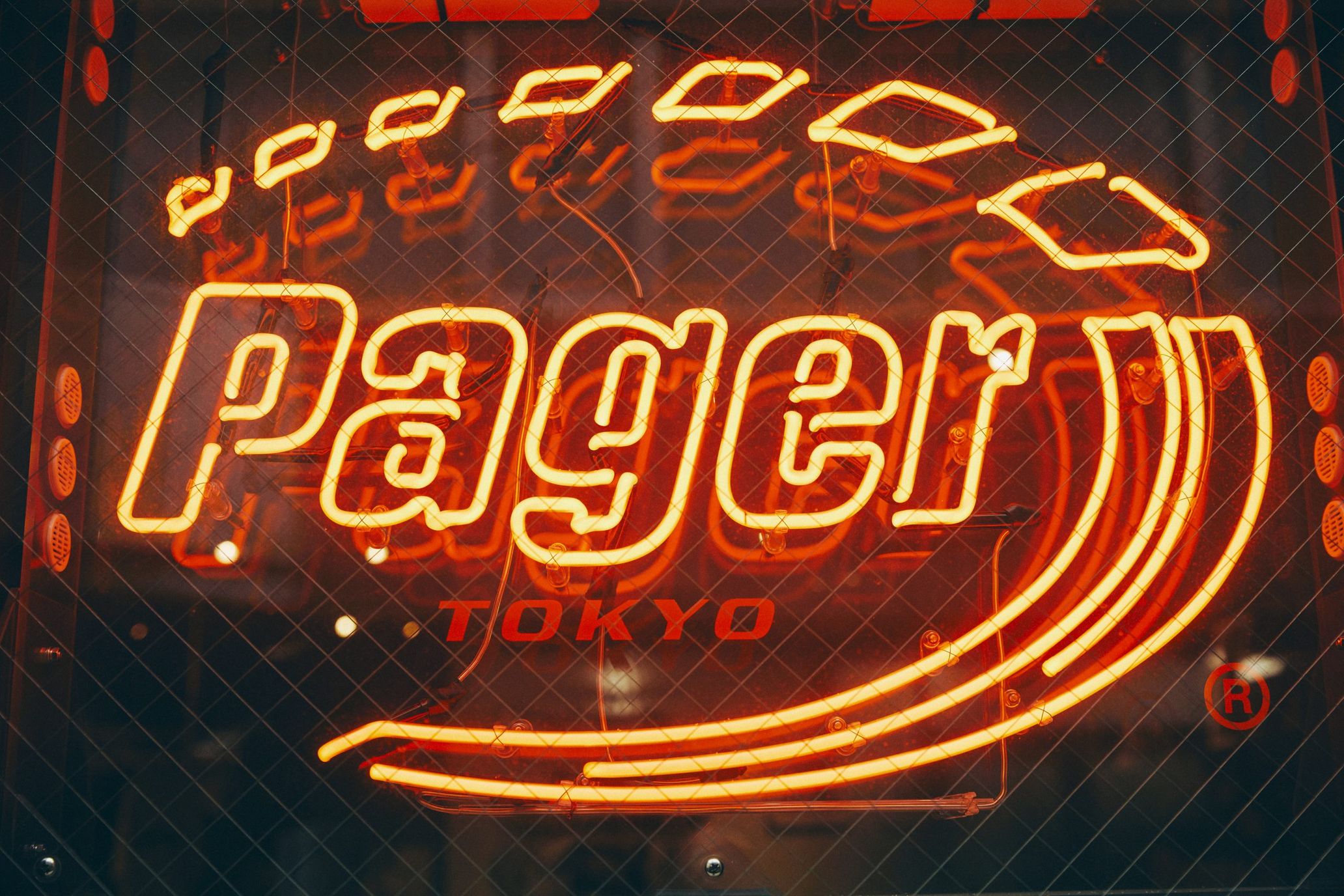
Four passionate skate photographers in their 20s to 40s, Junpei Ishikawa, Shinsaku Arakawa, Kenji Haruta, and Kohei Hayashi, who photographed skateboarding for the latest issue of Sb Skateboard Journal, brought their original printed photos and had an exhibition together. The exhibition was held at PAGER TOKYO, a skateboard store in Jimbocho. The staff at PAGER TOKYO have been with me since the days of WHEEL magazine in the 1990s to the era of web skate media VHS MAG and have always put great effort into making the most of skateboarding photography in an interesting way
The story surrounding skate photography in the 2010s
Around 2010, there were a great number of up-and-coming skate photographers, filmmakers, and designers who were real skaters at heart, and who also had great talent. By this time, much earlier than the subsequent post-Tokyo Olympics skateboarding whirlwind, I was intuiting and experiencing in the scene that skateboarding was always present somewhere in the growth process of urban kids, and that those who came in contact with it were updating themselves in a whole new way. As a result, the quality of skateboard photography improved dramatically, and the awareness of the subjects reached a higher level, allowing them to perform more advanced tricks faster, more reliably, and more beautifully in lesser-known spots.
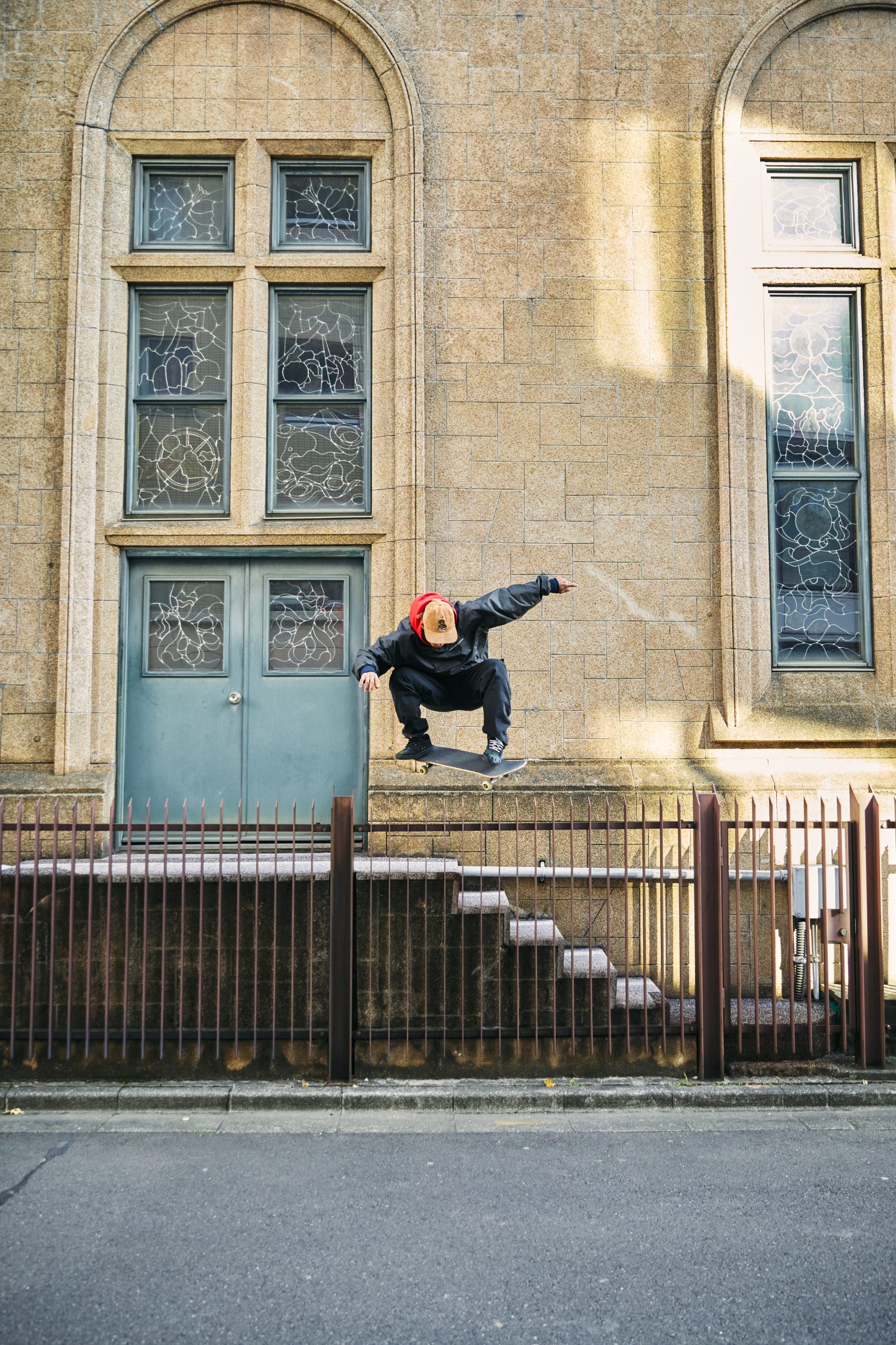
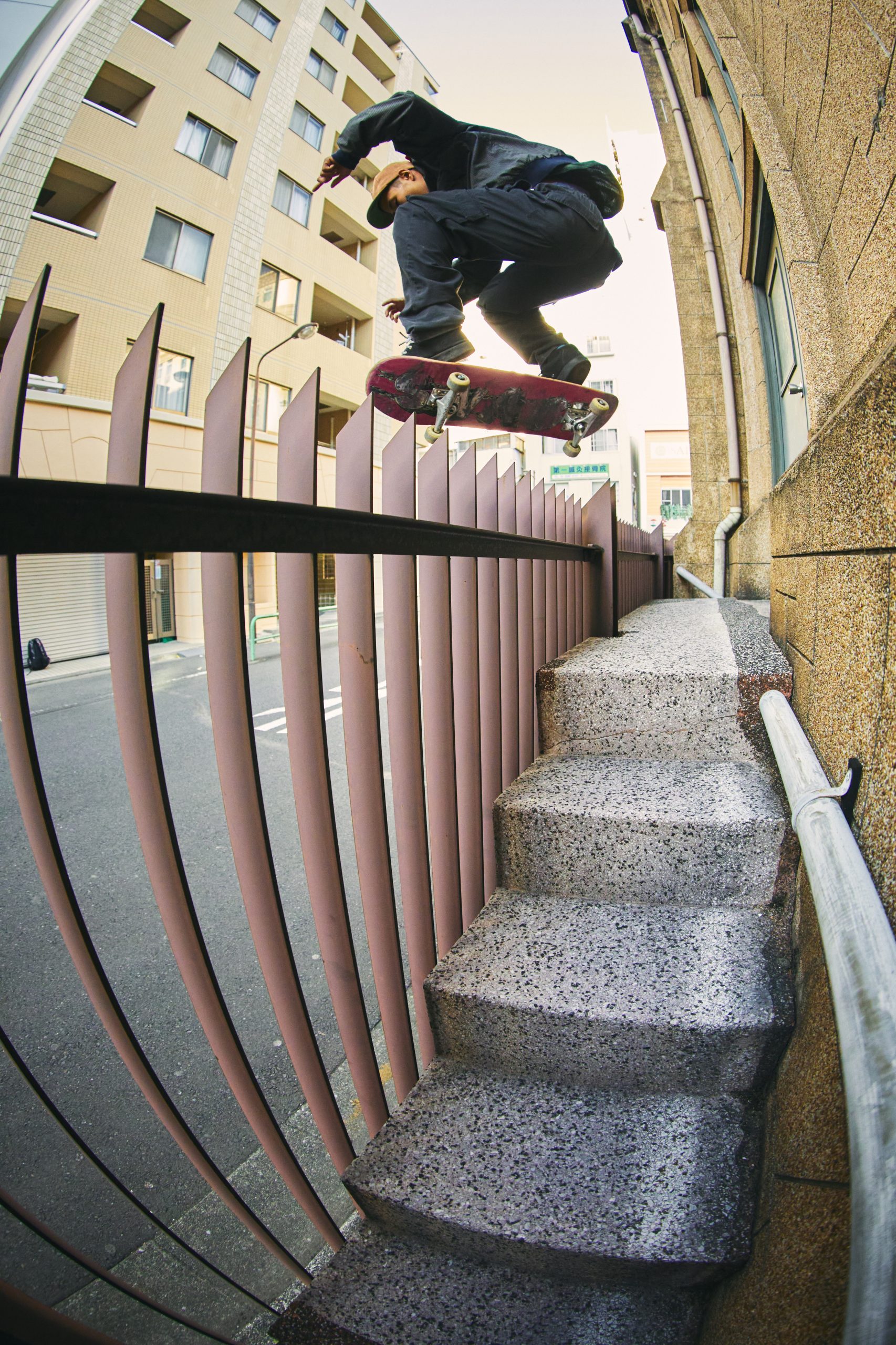
Yudai Fujigasaki / Ollie
These two angles reveal the sophisticated aesthetics of the photographer and the skater. They were taken with same trick and same subject and photographer in the same location. The security was as tight as usual. In such an environment, they dared to shoot from different angles to show picturesque skating photos in three dimensions and conveyed the hard and interesting aspects of the photoshoot
At that time, those of us who had been around the scene since the 1990s whispered to each other, “There are many up-and-coming skate photographers whose updated techniques are great and equipment is amazing to the extent that the old-timers are no longer needed.” It was the same kind of paradigm shift happened in the 1990s. With the rise of street skating, there was a shift from the previously dominant photography of skate competitors in park sessions and sections in 1990s. While the skateboard itself is a universal entity, combining pressed wood with concaves and four tires, the environment, industry, culture, and photography surrounding it are more ephemeral and updated very frequently. I have always been aware of this. So I’m happy to witness new waves and it’s great to see more and more people pushing on a skateboard here in Tokyo.
The most obvious change in terms of perspective of skate photographers and us would be the shift from film cameras to digital cameras. In the past, a roll of film was often completely wasted as it was filled with the images of missed tricks. In addition, when shooting difficult combo tricks or flip tricks, we usually shoot them consecutively to leave evidence of a successful trick, often wasting a roll of film on a single attempt. It’s been a while since the crisis of paper media rose up to the surface due to the high printing cost, but the cost of photosensitive materials at that time was far greater than such a crisis. The cost of skateboarding photo-shooting was higher than that of shooting with a top nude photographer, even though the studio fee and the cost of sushi and unaju (grilled eel rice) were not involved. The rise of digital cameras blasted the issue off like dynamite.
Furthermore, mobile tablets such as the iPhone have spread among people, and social networking services (SNS) have become the main form of information dissemination, making not only Tokyo, but every single one of us, the media outlet. The pervasiveness of SNS is far greater than that of blogging in the earlier era that was symbolized by the queen of blogs, Kaori Manabe (many of the younger generation may no longer be familiar with her). The times changed drastically as if something clattered down. Skate photographers can use SNS to disseminate images of successful tricks more powerfully and more quickly than they could with a single photo carefully published as a gravure photo in a magazine. And they can get enthusiastic responses through numbers of re-tweets and reposts.
This has changed the stance of skate photographers, but just as I still stick to the paper skateboard magazine Sb Skateboard Journal (Sb) and find value in printing skate images on paper, there are still more than a few photographers who take photos on film, develop them in a lab, and enjoy printing them on paper. This is another strange and interesting point. The real value of the fact that the image is printed on paper, the date of publication is recorded, and it exists as an actual thing that cannot be erased in an instant with a delete button, grows as time goes by. The more options we have in terms of how to deal with and disseminate skateboarding photos, the more I am enjoying my involvement with skateboarding and paper-based media. I am thrilled with the fun of proving how fun and enjoyable they are over time. There are several skate photographers who are just as excited as I am and are still out on the streets with their cameras. I can clearly see them in my mind’s eye.

Leo Takayama / Ollie
The photo shows the same trick Ollie as mentioned above, this time captured with an easily recognizable icon. In other words, this is a typical Tokyo photo. The Osaka skater was photographed in a recognizable location. The result is a successful shot that leaves a strong impression both as a skate photo and as a general image
The Present and Future of Skate Photography
And the story returns to the present. Since the Tokyo Olympics, skateboarding has been attracting more attention than ever before. It has become so popular that even those who had no idea what skateboarding was or who had previously treated it only as a nice addition to the subculture can no longer ignore it. In other words, it became one of the symbols of the times, a money tree. Nowadays, not only are skateboards used as props for filming TV dramas, but even skateboarding magazine SB is used, which is interesting and strange. Many ways of utilizing skateboards and shining the spotlight on skateboards that we would never have imagined are being proposed. I’m not mentioning it ironically, but I truly belive that we are entering an exciting new era for skaters, skate photographers, and people like us who believed in the potential of skateboarding. Seriously, skateboarding will soon be completely free, unbound by anyone or anything
This will change skateboarding photography, which has always been interesting and cool, even up until now. There is a strong possibility that even more talented professional skaters will emerge among Tokyo’s skate photographers in the future. The skills and visions of skate photographers, which were once described as “peaked out,” will definitely go beyond the limits. Personally, this is what excites me the most. Even until now, I’ve had a variety of experiments including having the image of missed trick of big-name professional skaters who never make mistakes on the cover, having them ollie in the river, taking a close-up shot of an outstanding waist movement of a skater when he was demonstrating a trick called backside tailslide with an outstanding waist movement, carrying a veneer board to the peak of Tottori Sand Dunes and having a subject skated on it. That’s how I’ve been playing (in a good way) with skateboard photos. (For me at least,)that was a process of opening the door of skateboarding photography. I am sure that we will see photos that go beyond the boundaries of what we have seen so far, and photos that delve deeper into the aesthetics that are unique to skateboarding. This cycle has been and will continue to be essential and universal for those who love skateboarding itself, are fascinated by it, and keep aiming higher.
In other words, such a great photo would be something simple that doesn’t need any explanation for skaters, but may need some explanation or caption to understand how great it is for others. Yet, such a photo will also blow minds of those who love photography and beautiful things, without explanation. This column was inspired by the four people who are currently working on creating such images and made a feature in Sb together. We created a page of outstanding photos without compromise, focusing on everything from the aesthetics of skateboarding and skateboard photography to the difficulty of the tricks, the tightness of the street spots, the splendor of the scenery surrounding it, and the characters of the skaters. I decided to write a column after being exposed to the photographs of Junpei Ishikawa, Shinsaku Arakawa, Kenji Haruta, and Kohei Hayashi. For this column, I was allowed to include a photo by Junpei Ishikawa, whose photo was also on the cover of Sb. I can say with certainty that this is one of the essential aesthetics of the current Tokyo scene.
It is nice to have a photo that can be understood with explanation like, “It took a great skill to take this picture because of the peculiarities of this spot in this situation, and yet this skater made it in only one attempt.” However, it is even better if the photo is so impressive that the reaction is like, “That’s cool,” “That’s beautiful” or “I just like it”. There is no need to call them skateboarding photos, or to call the photographers who take them skate photographers; they are essentially photos (works), and photographers (artists). There is no need to categorize them. In the publishing industry, it would be necessary to categorize people as nude photographers, women photographers, travelogue photographers, ruin photographers, animal photographers in various easy-to-understand ways, but people taking the pictures do not care about such things and do not have time to wear business cards around their necks. Every one of them has a distinctive personality. Some people only use Leica lenses, others only use Hasselblad lenses exclusively. Some people take great pictures with disposable cameras, while others use incredibly long lenses to capture nature in a fantastic way. There are different specs, different methods, different angles of view, different compositions, different colors, different moments.

Kyonosuke Yamashita / Fs tailslide
If the earlier image is an iconic photo of skateboarding in Tokyo, this is a photo of street skateboarding in Tokyo. The photographer’s skateboarding aesthetics give form to the image of tricks performed by the skater with his own sensibilities in an unphotogenic corner of the city. This collaborative process is interesting. It is rare in other industries for the model (the subject) to seek out a photo spot and then offer an opinion on the location
The only goal that unites us is to create one photo together through our efforts. In addition, the photo I choose must clearly show the following information: what kind of trick it is, where the deck is in the photo, what style it is, where the subject came from and where they are going. That is skateboarding photo information. The difficulty of the skateboarding trick or spot attack should, at the very least, be evident from the photo. On top of that, the creators’ personalities and aesthetics must be imprinted. That is why we dare to call their photos “skateboard photos” and the photographers “skate photographers” with respect.
The creative work process of skaters and skate photographers balances necessary information about skateboarding and artistic quality. This will never change, no matter how much time passes and the perceptions of those around us update. Even today, this process is still taking place on the streets of Tokyo, under the watchful eye of security. I believe that paper still has a role to play as a place for the careful presentation of this work. Incidentally, even if the paper medium disappears, skaters and skate photographers will not disappear. I am fully aware of that as well.
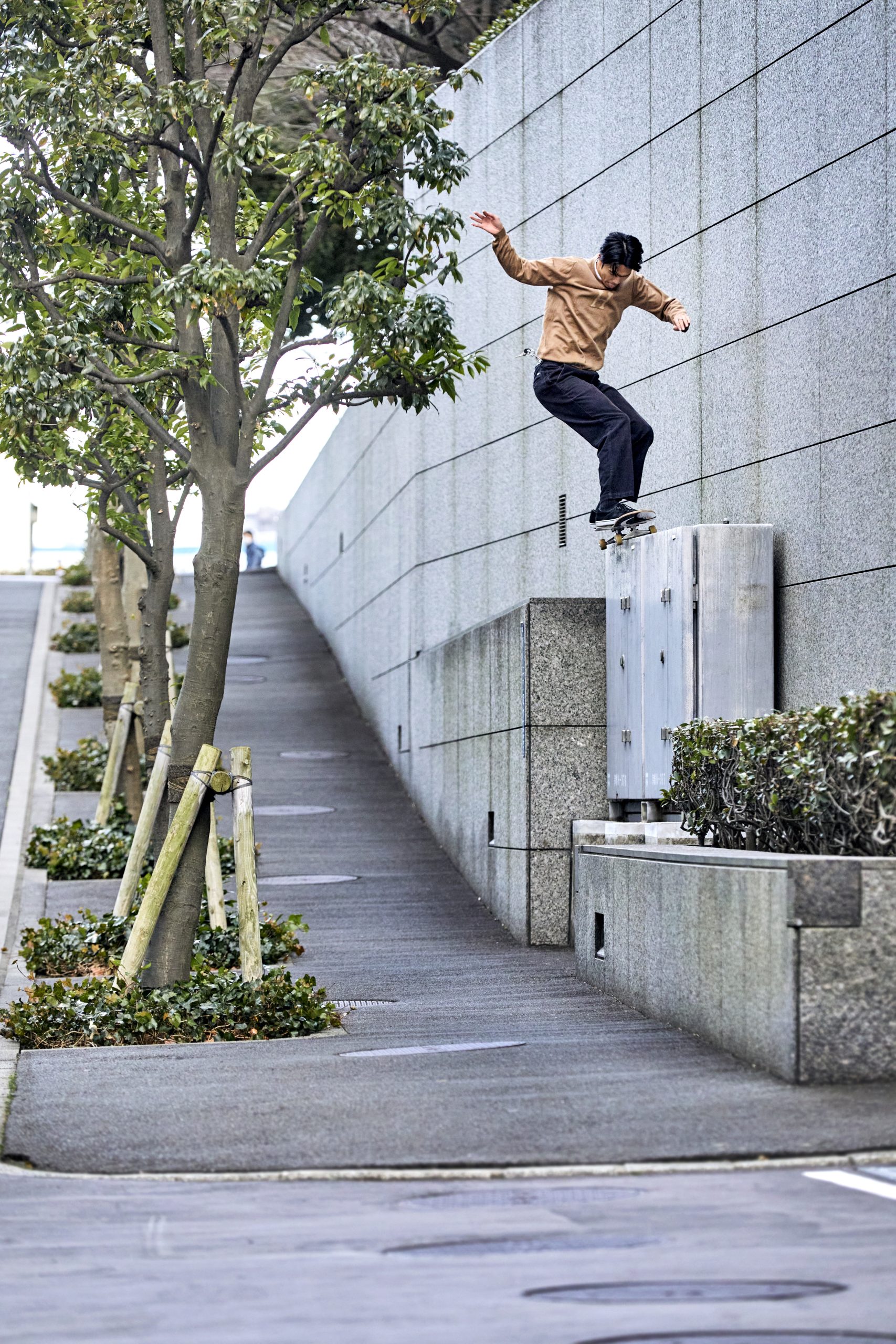

Mana Sasaki / 50-50grind
The essence of street skateboarding photography lies in the joy of making the most of the city’s topography and capturing it. This photograph was taken with careful consideration of the clothes, their coloring, and the atmosphere of the place. The time spent in the studio lighting, posing, styling, and makeup only adds to the studio fee, not the kick out or the weather. This gem was shot in tight, tough conditions with no catering or Bluetooth background music. Obviously, it is always frustrating when making a cover because it would be a shame to crop even 1mm of a photo like this!
Junpei Ishikawa
Born in Chiba Prefecture, Ishikawa’s specialty is skateboard photography. His motto: There is nothing more valuable than good health, and hit and run. On the cover of Sb magazine is his photo of a trick called hammer made on the first attempt by skater Mana Sasaki. This is the second time his photograph is featured in the cover of Sb magazine.
Instagram:@10npei
http://junpeiishikawa.com
Photography Junpei Ishikawa

